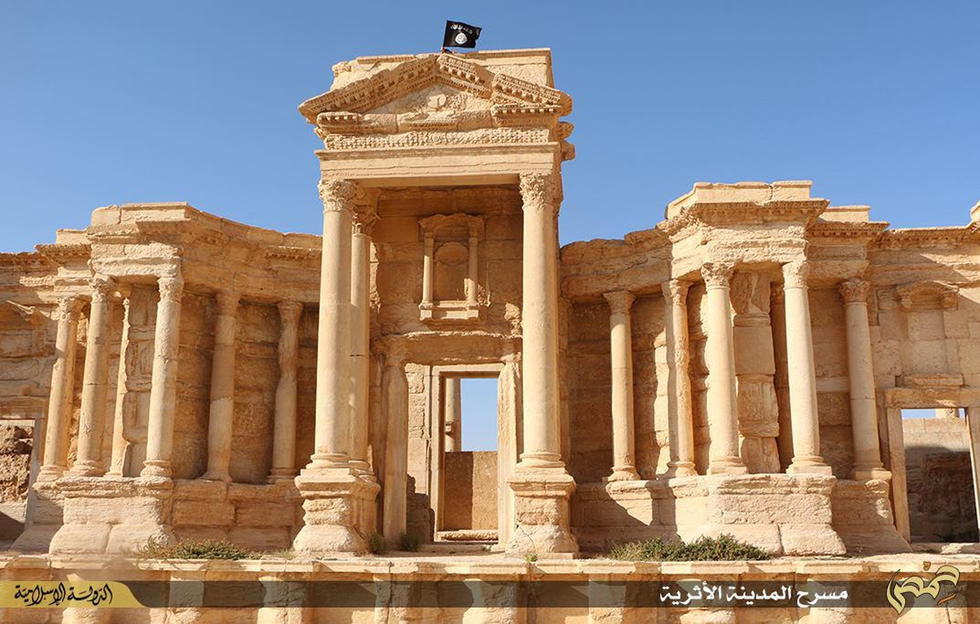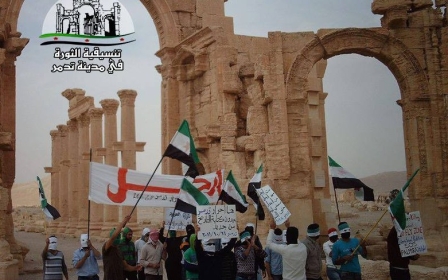IS destroys ancient lion statue in Syria's Palmyra

The Islamic State group have destroyed a famous statue of a lion outside the museum in the Syrian city of Palmyra, the country's antiquities director said on Thursday.
Maamoun Abdelkarim said the statue, known as the Lion of Al-Lat, was an irreplacable piece and was apparently destroyed last week.
"IS members on Saturday destroyed the Lion of al-Lat, which is a unique piece that is three metres (10 feet) tall and weighs 15 tonnes," Abdelkarim told AFP.
"It's the most serious crime they have committed against Palmyra's heritage," he said.
The limestone statue was discovered in 1977 by a Polish archeological mission at the temple of Al-Lat, a pre-Islamic Arabian goddess, and dated back to the 1st century BC.
Abdelkarim said the statue had been covered with a metal plate and sandbags to protect it from fighting "but we never imagined that IS would come to the town to destroy it".
IS captured Palmyra, a renowned UNESCO World Heritage site, from government forces on 21 May, prompting international concerns about the fate of the city's antiquities.
So far, the city's most famous sites have been left intact, though there are reports IS has mined them.
Most of the pieces in the city's museum were evacuated by antiquities staff before IS arrived, though the group has blown up several historic Muslim graves in recent weeks.
Also on Thursday, the group released photos showing its members in Aleppo destroying several statues from Palmyra that were being smuggled through the northern province.
"An IS checkpoint in Wilyat (region of) Aleppo arrested a person transporting several statues from Palmyra," the group said in an online statement.
"The guilty party was taken to an Islamic court in the town of Minbej, where it was decided that the trafficker would be punished and the statues destroyed."
The statement included photos showing several carved busts being destroyed with sledgehammers.
Abdelkarim said the busts "appear to be eight statues stolen from the tombs in Palmyra."
"The destruction is worse than the theft because they cannot be recovered."
IS's harsh version of Islam considers statues and grave markers to be idolatrous, and the group has destroyed antiquities and heritage sites in territory under its control in Syria and Iraq.
On Wednesday, the head of the UN cultural organisation UNESCO urged a campaign against IS's "culture cleansing".
"Extremists don't destroy heritage as collateral damage, they target it systematically to strike societies at their core," Irina Bokova said in a speech at the Chatham House think tank in London.
"This strategy seeks to destroy identities by eliminating heritage and cultural markers."
Middle East Eye propose une couverture et une analyse indépendantes et incomparables du Moyen-Orient, de l’Afrique du Nord et d’autres régions du monde. Pour en savoir plus sur la reprise de ce contenu et les frais qui s’appliquent, veuillez remplir ce formulaire [en anglais]. Pour en savoir plus sur MEE, cliquez ici [en anglais].




